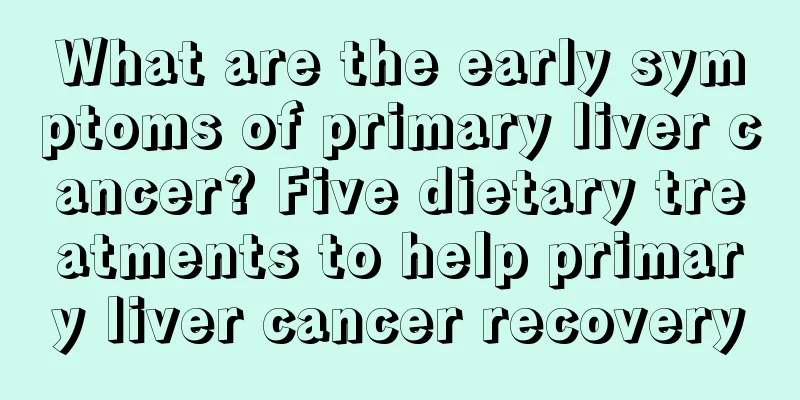What medicine to take for bacterial diarrhea

|
The incubation period of bacterial diarrhea ranges from hours to days or weeks. The onset is acute, while a few cases have a slower onset. The clinical manifestations vary in severity. The most prominent gastrointestinal symptoms are nausea, vomiting, diarrhea, bloating, and pain, which may be accompanied by urgency to urinate. The frequency of diarrhea may be more than a dozen times or even countless times, and the stool is watery and mucus. Bacterial diarrhea is a common disease. Below, I will show you what drugs can be taken for bacterial diarrhea. treat 1. Symptomatic treatment For patients with diarrhea accompanied by vomiting or severe abdominal pain, atropine-like drugs can be given, but opioid preparations should be used with caution or avoided because they can strongly inhibit intestinal peristalsis, making enterotoxins easily absorbed and aggravating poisoning or inducing toxic megacolon. There are also advocates for the use of intestinal mucosal protection preparations such as Smecta, which can adsorb pathogens and toxins, and can enhance the mucus barrier by interacting with intestinal mucus molecules to prevent the invasion of pathogens. In addition, berberine has good astringent and slight antibacterial effects, and has a certain effect on bacterial diarrhea. 2. Fluid therapy (1) Oral rehydration therapy (ORT) is suitable for the auxiliary treatment of mild, moderate and severe dehydration caused by acute diarrhea. The dosage and frequency of administration are determined according to the number of diarrhea episodes and the degree of dehydration of the patient. (2) Intravenous rehydration therapy is suitable for patients with severe diarrhea accompanied by dehydration, electrolyte imbalance, acidosis or shock. Lactated Ringer's solution is recommended for rehydration. Rapid intravenous rehydration should be given initially, following the basic principles of rehydration. For patients with secondary acidosis, 5% sodium bicarbonate or 11.2% sodium lactate should be given intravenously. The dosage can be given half the dose based on the results of blood gas analysis, and then decided based on the specific situation. Attention should be paid to the supplementation of potassium and calcium. Once the patient's dehydration is corrected and vomiting has improved, oral rehydration is administered. 3. Antibiotic treatment Different pathogens use different antibiotics. Mild cases of Yersinia infection are mostly self-limiting and do not require antibiotic treatment. For severe cases or those with sepsis, the treatment course is 2 to 3 days based on drug sensitivity tests. The bacteria are generally sensitive to aminoglycoside antibiotics, chloramphenicol, sulfonamides and fluoroquinolones. Diarrhea caused by enteroinvasive, pathogenic or enterotoxigenic Escherichia coli can generally be treated with oral fluoroquinolones for 3 to 5 days. For patients with mild Clostridium difficile-associated diarrhea, discontinuation of antibiotics can restore normal flora and relieve symptoms. If diarrhea persists after discontinuation of antibiotics, antibiotics targeting Clostridium difficile should be considered. Severely ill patients should be treated with effective antibiotics immediately. Treatment of AIDS-related diarrhea should include timely, early, and adequate use of antibiotics, such as cephalosporins and fluoroquinolones. 4. Microecological therapy Since bacterial diarrhea is caused by the invasion of exogenous bacteria or the translocation and imbalance of normal bacteria, which lead to the destruction of normal intestinal flora and imbalance of intestinal microecology, microecological therapy has been recommended in the treatment of bacterial infectious diarrhea in recent years. The purpose is to restore normal intestinal flora, rebuild the intestinal biological barrier, antagonize the colonization and invasion of pathogens, and facilitate the control of diarrhea. Commonly used preparations include probiotics and prebiotics, probiotics such as bifidobacteria, lactic acid bacteria, etc. Prebiotics include lactulose, fructooligosaccharides, inulin, etc. However, please note that oral live bacterial preparations should be taken about 2 hours apart from antibiotics to avoid killing the live bacteria and affecting the efficacy. |
<<: Can leftover crabs be eaten after being heated up?
>>: How to make a homemade barbecue grill
Recommend
Can walnuts reduce the risk of breast cancer? How to eat walnuts healthily?
Walnuts are a nut that is rich in nutrients. Wome...
What fruits to eat to prevent brain cancer
What fruits should you eat to prevent brain cance...
Is it the best medicine to treat tongue ulcers?
Ulcers are a common disease symptom in people'...
How to treat sinusitis?
Sinusitis is a very common disease in daily life....
Moxibustion improves sexual function
With the continuous improvement of daily living s...
What to do if my hands itch after eating yam
People who often buy vegetables know that there a...
What is Shengli Salt Water
Salt is an indispensable substance in life. It is...
How often should you have sex to easily get pregnant?
During the preparation for pregnancy, both husban...
What are the early symptoms of breast cancer? Pay more attention to these 5 symptoms of breast cancer
Female breast cancer is a "health killer&quo...
The small pit under the front bone of the calf
The phenomenon of a small depression on the front...
Can you get pregnant if you have endometrial cancer?
Pregnancy and childbirth are sacred and great thi...
Is blood type hereditary?
In fact, everyone's blood type is related to ...
Teenagers are tired of studying
The minds of teenagers are difficult to understan...
Chinese medicine secret recipe for treating bladder cancer
Bladder cancer can be divided into many categorie...
What's the use of expired lipstick
Lipstick should be a must-have cosmetic item in e...









